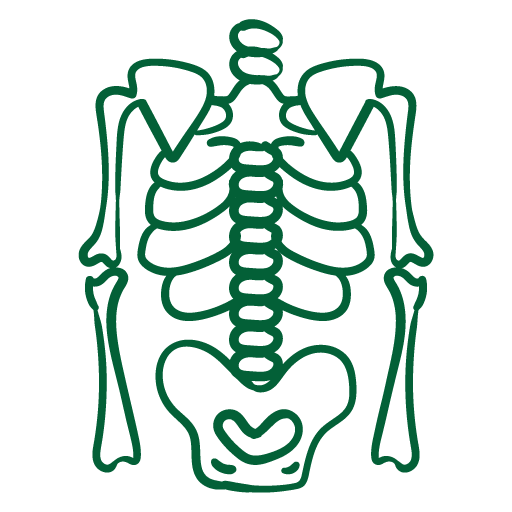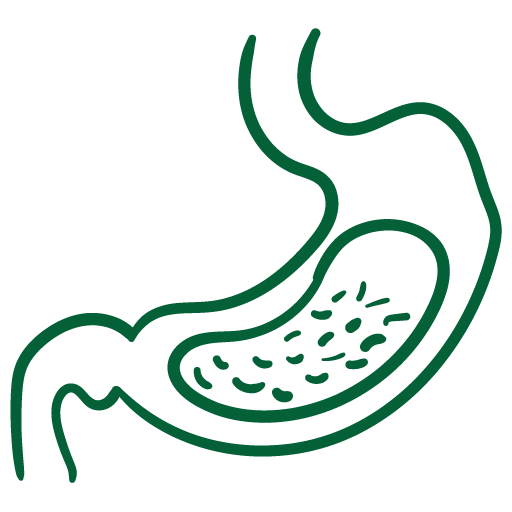Blood pressure is one of the most critical indicators of health. Understanding what constitutes a normal blood pressure reading is essential for maintaining overall well-being and preventing serious health issues.
In this guide, we will explore what normal blood pressure is, how it is measured, the importance of maintaining it within a healthy range, and practical tips for preventing high blood pressure. We'll also address concerns related to low blood pressure. So, keep reading to learn more and stay informed about your health!
Introduction
Blood pressure is the force exerted by circulating blood against the walls of the body's arteries, the major blood vessels in the body.
It is measured in millimeters of mercury (mm Hg) and is recorded with two numbers: systolic pressure (the top number) and diastolic pressure (the bottom number).
Understanding the significance of these readings and knowing the normal blood pressure ranges can help you take proactive steps towards a healthier life.
Ranges Of Typical Blood Pressure Readings
A normal blood pressure reading is below 120/80 mm Hg. This is the ideal range for most adults and indicates that the heart is pumping blood efficiently without undue strain on the arteries. Blood pressure readings can vary based on age, gender, and other factors.
For instance, children and teenagers typically have lower blood pressure than adults, while seniors might have slightly higher readings due to changes in the arteries. It's essential to monitor your blood pressure regularly, as individual variations can occur.
Consulting with your doctor ensures that your blood pressure remains within a healthy range as per your specific needs and circumstances.
Blood Pressure Chart By Age and Gender.
Blood pressure can vary significantly based on age and gender. Understanding these variations helps maintain optimal health. Given below is a simplified blood pressure chart to illustrate typical ranges:
|
Age Group |
Normal Blood Pressure Range (mm Hg) |
|
Children (1-12 years) |
90/60 to 120/80 |
|
Teenagers (13-19 years) |
105/70 to 120/80 |
|
Adults (20-40 years) |
110/70 to 120/80 |
|
Middle-aged Adults (40-60 years) |
115/75 to 125/85 |
|
Seniors (60+ years) |
120/80 to 140/90 |
- Children (1-12 years): Typically have lower blood pressure due to smaller body size and developing cardiovascular systems.
- Teenagers (13-19 years): Experience a slight increase as their bodies grow and hormones change.
- Adults (20-40 years): Normal range stabilizes, and maintaining a healthy lifestyle is essential.
- Middle-aged Adults (40-60 years): Blood pressure may rise slightly due to age-related changes in blood vessels.
- Seniors (60+ years): Blood pressure often increases further, partly due to less elasticity in the arteries.
It's important to note that these ranges can be influenced by various factors including lifestyle, diet, stress levels, and genetics.
What Is Blood Pressure?
Blood pressure is a vital sign that indicates the force of blood pushing against the walls of your arteries as your heart pumps it around your body. It plays a major role in ensuring that oxygen and nutrients are delivered to various organs and tissues while also helping remove waste products.
Blood pressure has two main components:
- Systolic Pressure: This is the higher number in a blood pressure reading. It measures the pressure in your arteries when your heart beats and pumps blood. For instance, if your reading is 120/80 mm Hg, 120 represents the systolic pressure.
- Diastolic Pressure: This is the lower number and measures the pressure in your arteries when your heart rests between beats. In the same reading of 120/80 mm Hg, 80 represents the diastolic pressure.
These measurements are taken in millimeters of mercury (mm Hg) and provide a clear picture of the health of your cardiovascular system. Maintaining a normal blood pressure is essential to reduce the risk of heart disease, stroke, and other health issues.
The Function Of Blood Pressure In The Body
Blood pressure plays a very important role in ensuring that oxygen and nutrients are delivered to tissues and organs throughout the body. It also helps in removing waste products and carbon dioxide. Here are some key functions:
Nourishment
Blood pressure ensures that oxygen-rich blood reaches vital organs like the brain, heart, and kidneys. These organs require a constant supply of oxygen and nutrients to function properly.
The heart pumps blood into the arteries, which carry it throughout the body, delivering essential substances to cells and tissues. Without adequate blood pressure, organs would not receive the necessary nutrients and oxygen, leading to impaired function.
Waste Removal
Blood pressure helps carry waste products to the liver and kidneys for detoxification and excretion. As blood circulates, it collects waste products from metabolism, including carbon dioxide, urea, and other toxins.
The kidneys filter these waste products out of the blood, while the liver processes toxins, making them easier to eliminate. Effective blood pressure ensures these waste removal processes work efficiently, preventing the buildup of harmful substances in the body.
Immune Function
Blood pressure aids in circulating white blood cells and antibodies necessary for fighting infections. The immune system relies on the bloodstream to transport immune cells to sites of infection or injury.
Adequate blood pressure ensures that these cells can quickly reach affected areas, where they can neutralize pathogens and initiate the healing process. Without proper blood circulation, the body's ability to respond to infections would be compromised.
Hormone Delivery
Blood pressure helps transport hormones, such as insulin, to various parts of the body. Hormones are chemical messengers that regulate numerous physiological processes, including metabolism, growth, and reproduction.
The circulatory system carries hormones from the glands where they are produced to target organs and tissues. Maintaining normal blood pressure ensures that hormones are efficiently delivered to their destinations, allowing the body to function optimally.
Maintaining a blood pressure normal range is essential for these functions to occur effectively and to reduce the risk of cardiovascular diseases. High or low blood pressure can disrupt these critical processes, leading to health issues such as heart disease, stroke, kidney failure, and weakened immune response.
Blood Pressure Measurement
Measuring blood pressure is a simple, non-invasive procedure that can be done at home or in a medical setting.
The device used is called a sphygmomanometer, which includes a cuff that inflates around the upper arm and a gauge that measures the pressure.
Here’s how blood pressure is generally measured:
Preparation:
- Sit comfortably with your back supported and your arm at heart level.
- Rest for at least 5 minutes before taking a reading.
- Avoid caffeine, exercise, and smoking 30 minutes prior to measurement.
- Ensure your bladder is empty and avoid talking during the measurement.
Inflation:
- The cuff is wrapped snugly around your upper arm.
- The cuff is then inflated either manually or automatically to a level that temporarily stops the flow of blood in your artery.
Measurement:
- As the cuff slowly deflates, the device measures the pressure in your arteries.
- The first sound heard through the stethoscope is the systolic pressure, indicating the force of blood against artery walls when the heart beats.
- The point at which the sound disappears is the diastolic pressure, indicating the pressure between heartbeats when the heart is at rest.
For example, a blood pressure reading of 120/80 mm Hg means the systolic pressure is 120 mm Hg and the diastolic pressure is 80 mm Hg.
It’s important to take multiple readings at different times of the day and on different days to get an accurate assessment of your blood pressure.
This helps account for natural variations and provides a comprehensive picture of your cardiovascular health.
Tips For Preventing High Blood Pressure
High blood pressure, or hypertension, can lead to serious health issues such as heart disease, stroke, and kidney problems. Maintaining a blood pressure normal range is essential for overall health. Here are some tips to help keep your blood pressure within a healthy range:
- Maintain a Healthy Weight: Excess weight can increase the risk of high blood pressure. Losing even a small amount of weight if you're overweight can help reduce your blood pressure.
- Eat a Balanced Diet: Focus on a diet rich in fruits, vegetables, whole grains, and lean proteins. These foods are high in essential nutrients and low in unhealthy fats and sugars. Limiting salt, sugar, and saturated fats can also help manage your blood pressure. The DASH (Dietary Approaches to Stop Hypertension) diet is a great example of a balanced diet that can help reduce blood pressure.
- Exercise Regularly: Aim for at least 30 minutes of moderate exercise, such as brisk walking, most days of the week. Regular physical activity helps strengthen your heart and improve blood circulation, which can lower your blood pressure.
- Reduce Sodium Intake: Excessive sodium can increase blood pressure by causing the body to retain fluid, which puts extra strain on the heart. Aim to consume less than 2,300 mg of sodium per day. For those with high blood pressure, even lower intake (around 1,500 mg per day) is ideal.
- Limit Alcohol Consumption: Drink alcohol in moderation—up to one drink per day for women and two drinks per day for men. Excessive drinking can raise blood pressure and reduce the effectiveness of blood pressure medications.
- Manage Stress: Chronic stress can contribute to high blood pressure. Practice stress-reducing techniques such as meditation, deep breathing, and yoga. Engaging in hobbies, spending time with loved ones, and ensuring adequate sleep can also help manage stress levels.
- Avoid Smoking: Smoking damages blood vessels and raises blood pressure. Quitting smoking can significantly improve your cardiovascular health and lower your blood pressure.
- Regular Check-ups: Visit your healthcare provider regularly to monitor your blood pressure and discuss any concerns. Regular check-ups can help detect and address blood pressure issues early, preventing long-term health complications.
By incorporating these lifestyle changes, you can help maintain a healthy blood pressure range and reduce the risk of hypertension-related health issues.
Low Blood Pressure Concerns
While high blood pressure is often emphasized, low blood pressure (hypotension) can also be a concern. A blood pressure reading below 90/60 mm Hg is considered low and can cause symptoms such as dizziness, fainting, and fatigue. In severe cases, it can lead to shock, a life-threatening condition.
Causes of Low Blood Pressure
The main causes of low blood pressure are:
- Dehydration: Not drinking enough fluids can cause low blood pressure.
- Heart Problems: Some heart conditions can lead to low blood pressure.
-
Endocrine Issues:
Disorders of the adrenal glands or thyroid can cause low blood pressure.
- Severe Infection: Sepsis can result in dangerously low blood pressure.
- Blood Loss: Losing a significant amount of blood, such as from an injury, can lead to low blood pressure.
- Nutrient Deficiencies: Lack of vitamins B-12 and folate can prevent the body from producing enough red blood cells, leading to low blood pressure.
If you experience symptoms of low blood pressure, it's important to consult with a doctor to determine the underlying cause and appropriate treatment.
Wrapping Up!
Maintaining a normal blood pressure range is vital for overall health and well-being. By understanding what constitutes normal blood pressure, how it is measured, and the importance of keeping it within a healthy range, you can take proactive steps to protect your heart and reduce the risk of serious health issues.
Adopting a healthy lifestyle, regular monitoring, and consulting with healthcare professionals are key strategies for managing blood pressure effectively.
Frequently Asked Questions (FAQs)
What is considered blood pressure normal range?
Normal blood pressure is below 120/80 mm Hg. This means a systolic pressure of less than 120 mm Hg and a diastolic pressure of less than 80 mm Hg.
What are the ranges for blood pressure?
Blood pressure ranges include:
- Normal: Below 120/80 mm Hg
- Elevated: 120-129 mm Hg systolic and below 80 mm Hg diastolic
- Stage 1 Hypertension: 130-139 mm Hg systolic or 80-89 mm Hg diastolic
- Stage 2 Hypertension: 140 mm Hg or higher systolic or 90 mm Hg or higher diastolic
- Hypertensive Crisis: Over 180/120 mm Hg
How does blood pressure vary by age and gender?
Blood pressure can vary with age and gender. Generally, it tends to rise with age. Men typically have higher blood pressure than women in younger age groups, but this trend can reverse in older age groups.
How is blood pressure measured?
Blood pressure is measured using a sphygmomanometer. The cuff is inflated around the upper arm and then slowly deflated while a gauge measures the pressure in the arteries.
What can I do to prevent high blood pressure?To prevent high blood pressure, maintain a healthy weight, eat a balanced diet, exercise regularly, reduce sodium intake, limit alcohol consumption, manage stress, avoid smoking, and have regular check-ups.
What should I do if my blood pressure is too low?If your blood pressure is too low and you experience symptoms like dizziness or fainting, consult a doctor. They can determine the underlying cause and recommend appropriate treatment.










